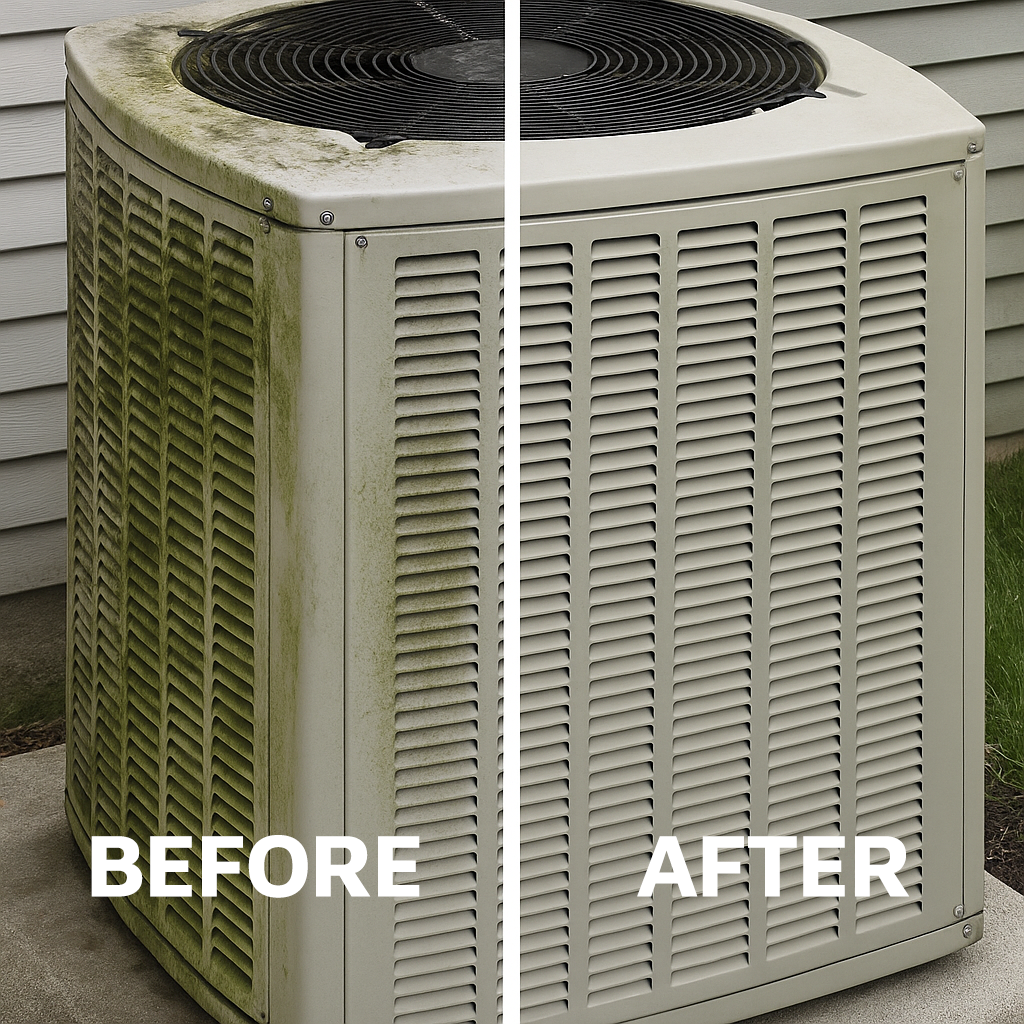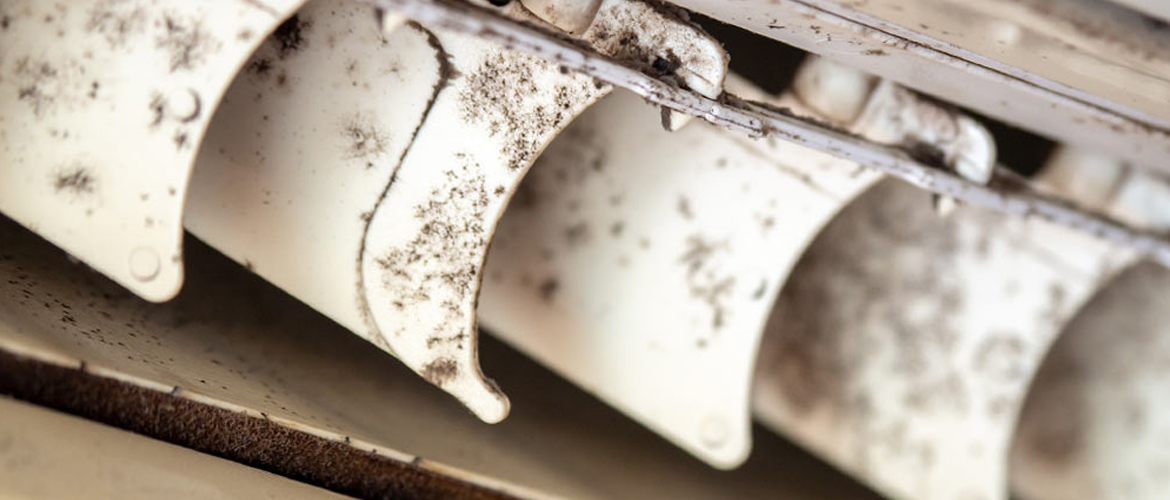Causes, Effects, and Solutions for a Healthier Home
If your home has a persistent musty odor, your allergies are acting up, or you’ve spotted dark patches in or around your HVAC unit or vents, mold might be to blame. Mold in an air conditioner is more common than most homeowners realize, and unaddressed, it can have serious consequences for your indoor air quality, comfort, and health. It’s important to know why mold forms in AC units, how to spot the signs, what it means for your health and system performance and, most importantly, how to prevent and eliminate it.
Understanding Mold and Why It Forms in HVAC Units
Mold is a type of fungus that thrives in damp, dark, and warm environments – conditions often found inside an air conditioner. Your HVAC system, especially during humid times of the year, can provide the perfect breeding ground for mold to take hold and spread.
Common Types of Molds Found in HVAC Units
The most frequently found molds in HVAC systems include:
-
- Cladosporium – Typically black or green, usually grows on damp fabrics or wood.
- Aspergillus – Found indoors and can become airborne, potentially triggering allergic reactions.
- Stachybotrys (Black mold) – Rare but toxic, this mold grows in extremely damp conditions and is often associated with water damage.
Where Mold Can Grow in an HVAC System
The most common places where mold can appear are:
-
- Evaporator coils and drip pans
- Air filters
- Ductwork
- Inside the air handler
- Condensate drain line
The combination of atmospheric humidity or moisture from condensation, warmth from the motor, and organic particles in the air (like dust or pollen) above 60% creates an ideal mold habitat.
Signs You Might Have Mold in Your AC Unit
Wondering if mold is lurking in your HVAC system? Here are some red flags:
Musty Odors
A damp, musty smell when the AC turns on is often the first noticeable sign of mold.
Visible Mold or Discoloration
Look for black, green, or white patches around the vents, on filters, or inside the air handler.
Reduced Airflow or Efficiency
Mold can clog filters or obstruct ventilation ducts, which reduces airflow and causes your system work harder.
Increased Allergy Symptoms
If you or your family experience coughing, sneezing, or irritated eyes when the AC is running, mold could be circulating through the air.
Health Risks of Mold in Air Conditioners
Mold in your AC unit doesn’t just affect comfort, it can impact your health – especially for those with respiratory conditions or allergies. Mold can cause:
Allergic reactions: Sneezing, runny nose, itchy eyes, and skin irritation.
Asthma flare-ups: Mold spores can trigger asthma attacks or worsen existing respiratory issues.
Long-term exposure risks: Extended mold exposure can lead to chronic respiratory problems, especially in children, the elderly, or people with weakened immune systems.
When to Seek Professional Help
Some mold problems go beyond a quick cleaning. Contact a professional if:
-
- The mold returns quickly after cleaning.
- You can see mold inside ducts or deep within the unit.
- Your family continues to experience allergy or respiratory issues.
- The system smells musty even after cleaning and maintenance.
Lennox-certified technicians are trained to diagnose mold problems, perform deep cleanings, and recommend air quality improvements tailored to your home.
How to Prevent Mold in Your AC Unit

The best way to deal with mold is to stop it before it starts. Here’s how to keep your system clean and your indoor air healthy:
Regular Cleaning and Maintenance
-
- Clean your AC components and replace filters according to the manufacturer’s recommendations.
- Schedule professional HVAC maintenance twice a year.
-
- Use a dehumidifier if your home has high moisture levels.
- Keep indoor humidity below 60% (ideally between 30–50%).
-
- Ensure good airflow by keeping vents open and unobstructed.
- Install or maintain exhaust fans in high-moisture areas like bathrooms and kitchens.
Drainage and Airflow
-
- Make sure the drip pan and condensate line are draining properly.
- Inspect for clogs or standing water during each seasonal check-up.
-
- Consider adding a whole-home air purifier or UV light system, available through Lennox dealers, to reduce airborne mold spores and bacteria.
Mold in your HVAC unit isn’t just an inconvenience; it can affect your comfort and health – and have an impact on the efficiency of your HVAC system. But with a little knowledge, regular upkeep, and the support of a Lennox professional, you can keep your system mold-free and on the path to perfect air.
If you think you may have a mold issue that goes beyond at-home maintenance, give your local Lennox Dealer a call and set up an inspection today.

